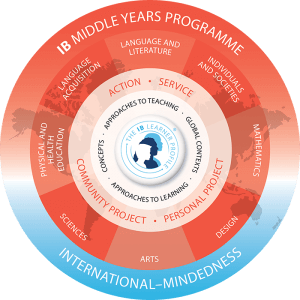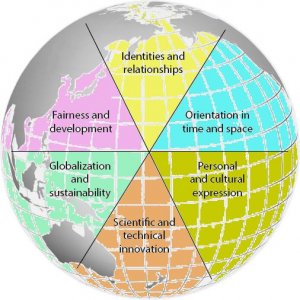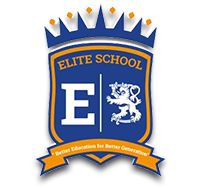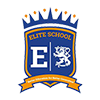Introduction to the Middle Year Programme (MYP)
The IB Middle Years Programme
The IB goal is to provide students with the values and opportunities that will enable them to
develop sound judgments, make wise choices and respect others in the global community . It is a
purpose-built five-year program (Grades 6-10, ages 11-16) for international schools and is now
being taught and implemented worldwide.
The IB MYP builds upon the skills and learning developed in the IB Primary Years Programme
(IB PYP). IB PYP teaching and learning “focuses on the development of the whole child as an
inquirer, both in the classroom and in the world outside” (IB). The IB MYP also relies on connecting
classroom pedagogical practices and content to the world outside through the Global Contexts and
the Learner Profile.
The IB MYP prepares students for the IB Diploma Programme, which was established to provide
students with a balanced education, facilitate geographic and cultural mobility and to promote
international understanding.
The IB MYP philosophy
The IB MYP emphasizes holistic learning.
The IB MYP should expose students to as many different subjects, skills and experiences as possible
so that students will learn to see knowledge as an interrelated whole. Students should have the
opportunity to show their various strengths while being rewarded for them and gaining a sense of
personal achievement.
The IB MYP emphasizes intercultural awareness and communication.
In our community, it is essential that the curriculum reflects and is responsive to the different
perspectives of all our students. It should also guide them in forming their own, international,
outlook. This implies an emphasis on communication skills, both in the languages and in other
subjects.
The IB MYP is student-centered.
It is vital that students develop an awareness of their own learning process and the necessary skills
to continue learning throughout life. The curriculum seeks to shift the emphasis from teacher-led
instruction to student-led learning wherever possible.
The philosophy’s key elements permeate and are practiced throughout the whole curriculum.
MYP educators have continued to focus on how best to meet the needs of adolescents, who are
confronted with a vast and often bewildering array of choices in a complex and rapidly changing
world. A focus on higher-order thinking skills gives students opportunities to develop a growing
awareness of themselves and others, as they explore real-world issues.
The IB Middle Years Programme at EIS
Elite International School adopted the IB MYP because the philosophy and objectives of this program
reflect those of the school. In addition, the IB MYP:
– Is an international program with no bias towards any particularnational system;
– Provides vertical consistency through the IB Diploma in grades 11and 12and the PYP in the Primary
School; many elements of the IB MYP are common to the skills required by the Diploma and developed in
the PYP
– Provides assessment, within the IB MYP subjects, which share a common approach by being
criterion-based and inquiry-led
-Has strong, interdisciplinary elements
– Is flexible enough to allow EIS to design the curriculum to fit student needs
– Does not prescribe content of subject areas but does provide a framework for their delivery
– Supports curriculum development and external evaluation.
The assessment within each subject is designed to help students and parents recognize a student’s
individual strengths and weaknesses according to the particular set of skills necessary for achievement.
The IB MYP curriculum model

© International Baccalaureate Organization 2018
Global Contexts
Why are we learning this?
Learning at EIS aims to help students understand the complex world.
Clearly, there are many different things that one would need to understand in order to understand the
world. All of these things can be broken down in to six categories, known as the Global Contexts. Units
of work in all subjects allow students to explore one of the Global Contexts.
Global Contexts are designed to encourage the students to make worthwhile connections between the
real world and classroom learning. Through their learning of subject concepts, students will come to a
better understanding of a Global Context.

Approaches to teaching and learning (ATL) skills
The MYP extends IB approaches to learning (ATL) skills categories into
10 developmentally appropriate clusters. This framework provides
common ground from which schools can develop their own ATL planning
based on MYP units, student needs, and local circumstances and
requirements.
ATL skills are often interconnected. Individual skills and skills clusters
frequently overlap and may be relevant to more than one skill category.
Some of the key questions to be answered by students with respect to
ATL skills include the following.
• What are my present skills in this area and what evidence do I have of my
development?
• What skills can I improve?
• What new skills can I learn?
When specific ATL skills become an explicit focus for teaching and
learning, students can begin to take responsibility for their own
development. Over time, students can identify themselves and their
competence in any learning strategy using terms like the following.
• Novice/beginning—students are introduced to the skill, and can
watch others performing it (observation)
• Learner/developing—students copy others who use the skill and use
the skill with scaffolding and guidance (emulation)
• Practitioner/using—students employ the skill confidently and
effectively (demonstration)
• Expert/sharing—students can show others how to use the skill and
accurately assess how effectively the skill is used (self-regulation)
A concept-driven curriculum that uses ATL skills effectively enables all
students to become stronger, more self-regulated learners.

